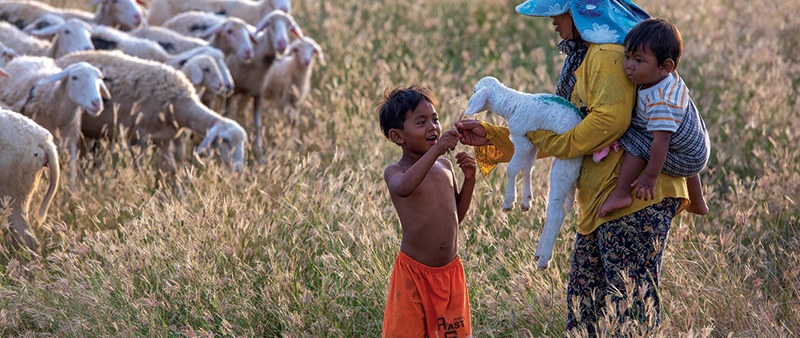Tourism boosts coming via ocop
 |
| Tourism boosts coming via ocop |
Along with its famous beaches, the northern province of Quang Ninh has made itself a name for its Developing One Commune, One Product (OCOP) products, such as Binh Lieu vermicelli, yellow flower tea, Tien Yen chicken, and many more. Quang Ninh has developed more than 500 such OCOP products sold at over 30 shops for domestic and foreign tourists.
Within a chain of cultural, sports, and tourism events to stimulate demand, the locality also organises many fairs to connect consumers with OCOP items and considers this as one of the auxiliary services that contribute to promoting the image of a safe and friendly Quang Ninh.
According to the Central Coordination Office on New Rural Development (CCO), the OCOP programme is an economic development scheme in rural areas with a focus on developing products and services that have advantages in each locality.
The famous town of Dalat, in the Central Highlands province of Lam Dong, is considered the capital of agricultural tourism. In recent years, the suburban areas of Dalat have developed rapidly and attracted a large number of people thanks to tourism that combines farming and agricultural production with a series of tourist attractions, such as at Cau Dat Farm, the Dalat Milk flower farm, and the Van Thanh and Thai Phien flower villages. Agricultural tourism models attract and create jobs for nearly 1,000 local workers, including around 50 tour guides at the destination.
“Integrating the development of OCOP with tourism will make the most of investment resources, thereby enhancing the value of these products and promoting the image of local tourism and thus increasing people’s incomes towards sustainable tourism and rural development,” said Dao Duc Huan, head of Management at the National OCOP Programme under the CCO.
One of the most successful regions in developing OCOP tourism is the Mekong Delta. The region has the third-largest number of OCOP items in the country, at 375.
The central province of Quang Nam also offers a series of popular products such as Hoi An lanterns, the community tourism services of the Tan Thanh fishing village, and the Cu Lao Cham forest tea, attracting both domestic and overseas tourists to Quang Nam. In addition to areas where OCOP combines with tourism based on local advantages, it is also necessary to include ancient craft villages in the programme to create resilience for these lands.
The central province of Ninh Thuan is not a land that has been favoured by the climate but knows how to take advantage of available characteristics to promote rural tourism. Ninh Thuan’s tourism in recent years has been relatively successful with farming models, especially grape farms and farming tours.
When it comes to craft villages, the My Nghiep weaving village and the Bau Truc pottery village are some of the oldest in Southeast Asia and also among the only places to make ceramics entirely by hand, rendering them popular destinations that attract thousands of visitors every year and provide a stable source of income to locals. In addition to promoting the potential and quality of specific local products, Ninh Thuan also organises support and advertising for those offering OCOP items. The province has built shops and showrooms to introduce and sell related products of the province to tourists at Vinh Hy Tourist Area, the Tourist Night Market, and Po Klong Garai Tower, as well as other locations. At the same time, the province supports enterprises to innovate and improve machinery and equipment to meet the market demand.
Meanwhile, Hanoi also plans to continue to support community-based tourism and traditional craft village products, thereby creating favourable conditions for rural tourism. Out of a total of 1,350 craft villages in and around Hanoi, there are currently 17 traditional ones associated with tourism development, such as the Bat Trang ceramic village, the Son Dong sculpture and fine art village, the Quat Dong embroidery, and the Thiet Ung wooden handicraft village.
What the stars mean:
★ Poor ★ ★ Promising ★★★ Good ★★★★ Very good ★★★★★ Exceptional
Related Contents
Latest News
More News
- Dalat leads Vietnam’s 2025 search trends (December 09, 2025 | 13:44)
- Vietnam welcomes record wave of international visitors (December 09, 2025 | 13:43)
- Vietjet launches daily Manila flights to celebrate year-end festive peak season (December 05, 2025 | 13:47)
- The destinations powering Vietnam’s festive season travel demand (December 04, 2025 | 18:33)
- Vietnam named among the world’s most exciting winter destinations (December 04, 2025 | 15:10)
- Phu Tho emerges as northern Vietnam’s new tourism hub (December 01, 2025 | 17:00)
- Vietjet completes Airbus A320/A321 updates ahead of deadline (December 01, 2025 | 09:49)
- Vietjet resumes Con Dao flights from early December (November 28, 2025 | 15:24)
- Free tickets, Lunar New Year promotions on offer at Vietjet Mega Livestream (November 26, 2025 | 15:32)
- Scandinavian Airlines and Vietnam Airlines broaden agreement with new routes (November 25, 2025 | 17:04)

 Tag:
Tag:


















 Mobile Version
Mobile Version